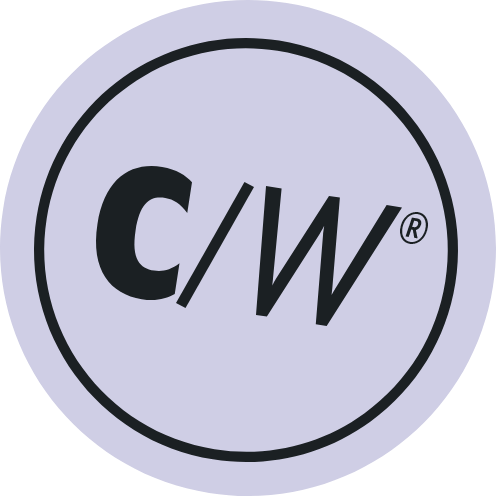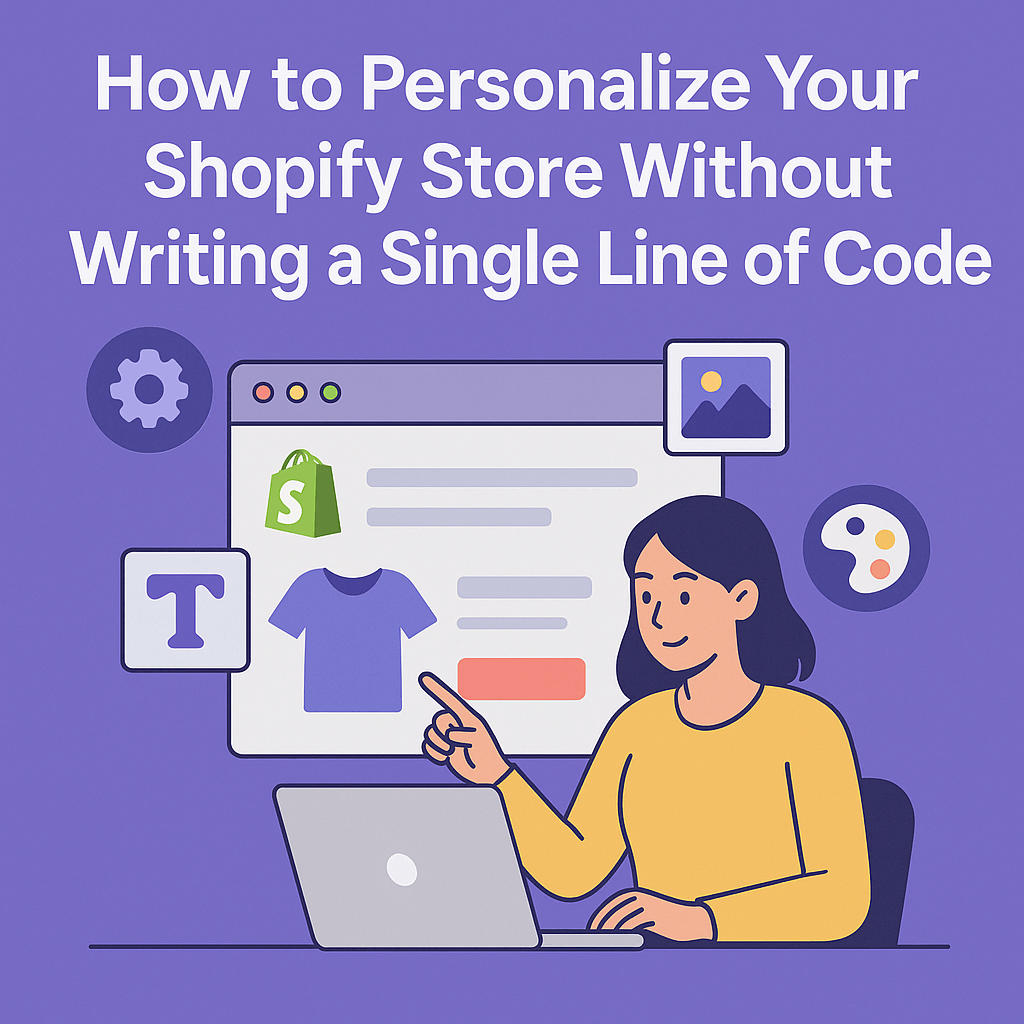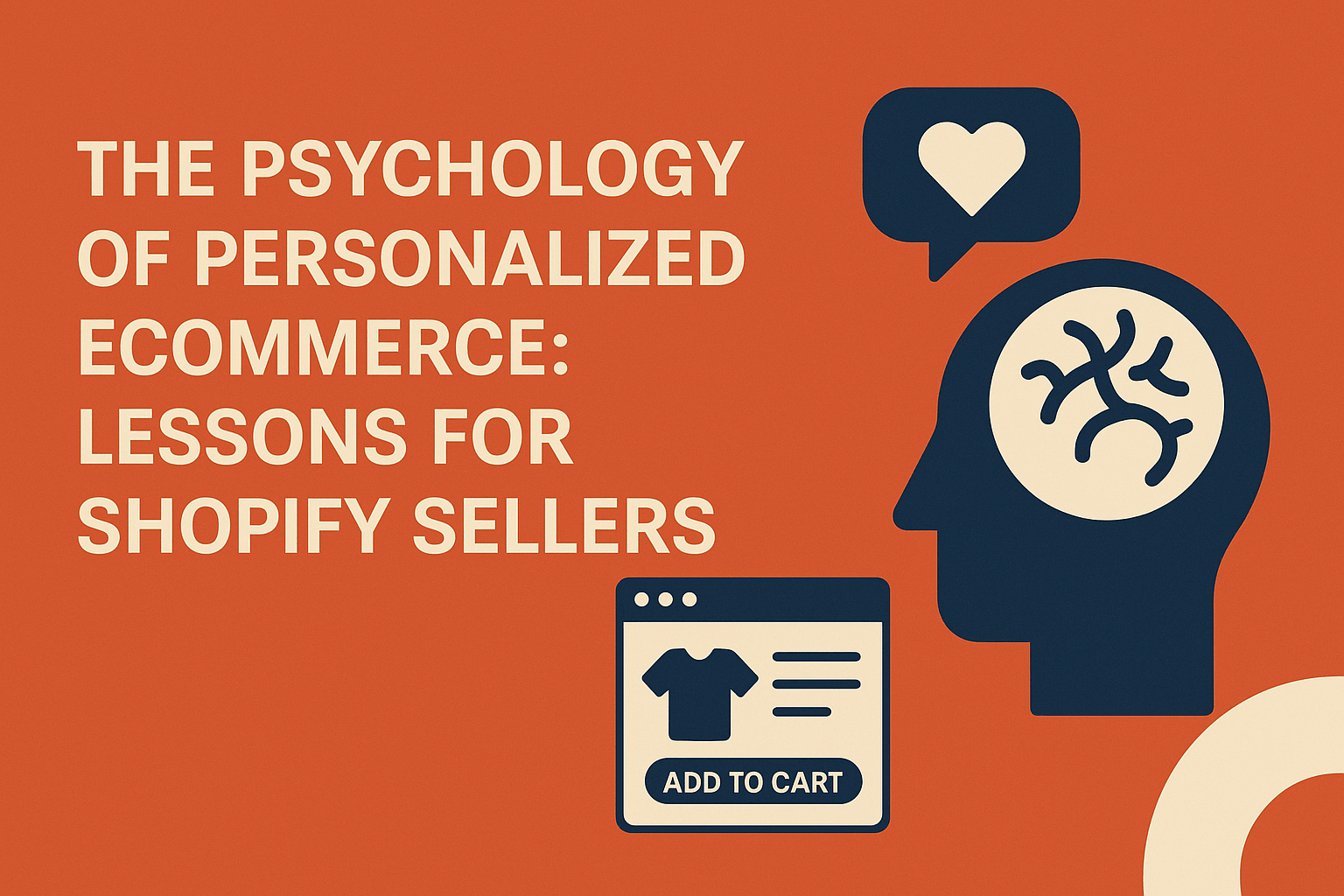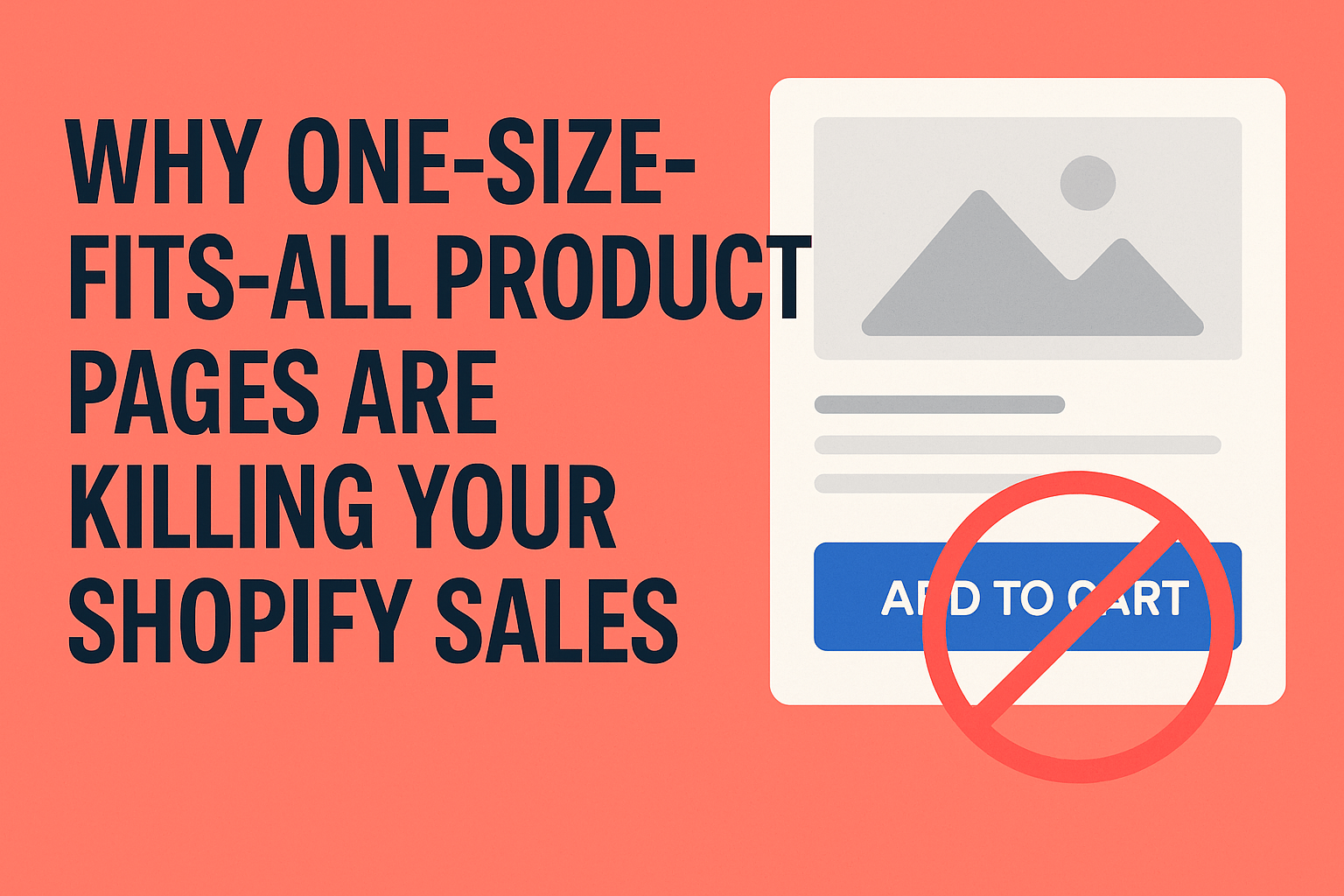The Psychology of Personalized Ecommerce: Lessons for Shopify Sellers
In the crowded world of ecommerce, a generic, one-size-fits-all approach no longer cuts it. Today's customers don't just want products; they want experiences tailored to them. In fact, a staggering 71% of consumers expect companies to deliver personalized interactions. For Shopify sellers, this isn't just a trend—it's a fundamental shift in how to attract, convert, and retain customers.
But what makes personalization so effective? The answer lies in human psychology.
By understanding the core psychological drivers behind a customer's decisions, you can transform your Shopify store from a simple product catalog into a dynamic, engaging, and highly converting personal shopping assistant. Let's dive into four psychological principles you can leverage to create a powerful personalized ecommerce strategy.
1. The Human Desire for Relevance
The Psychology: Think of the "cocktail party effect"—how you can be in a loud, crowded room, yet your ears instantly perk up when you hear your name. Our brains are wired to filter out noise and focus on what is personally relevant to us. When customers visit your store, they are subconsciously looking for that same signal. They're asking, "Is this for me?" A personalized experience answers with a resounding "Yes!"
How to Apply It on Shopify:
- Personalized Product Recommendations: Move beyond generic "Top Sellers." Use Shopify apps like LimeSpot or Rebuy to analyze a user's browsing history, past purchases, and cart contents. Showcase dynamic sections like "You Might Also Like," "Complete the Look," or "Inspired by Your Browsing History" to present hyper-relevant products they are more likely to buy.
- Segmented Email Campaigns: Ditch the email blast. Use your email marketing platform (like Klaviyo or Omnisend) to segment your audience based on behavior. Create segments for:
- VIP Customers: Reward them with exclusive early access or special discounts.
- First-Time Buyers: Send a welcome series with tips on how to get the most out of their new product.
- Category-Specific Shoppers: If someone only buys men's shoes, don't send them an email about a new line of women's dresses.
- Dynamic Website Content: Show different homepage banners, pop-ups, or featured collections to different visitors. A new visitor could see a "10% Off Your First Order" banner, while a returning customer sees a "Welcome Back! Check Out Our New Arrivals" message.
2. Reciprocity and Trust
The Psychology: The principle of reciprocity, popularized by psychologist Dr. Robert Cialdini, states that when someone gives us something of value, we feel a deep-rooted psychological urge to give something back in return. In ecommerce, you can trigger this by providing value before asking for the sale. This simple act builds trust and makes the customer feel appreciated, making them far more likely to reciprocate by making a purchase.
How to Apply It on Shopify:
- Offer Personalized Help: Instead of just selling a product, sell a solution. If a customer is looking at high-end cameras, a personalized pop-up could offer a free "Beginner's Guide to Photography" PDF in exchange for their email. This gift builds goodwill and establishes your brand as a trusted expert.
- Meaningful Discounts: A generic pop-up offering 10% off is easily ignored. A personalized offer is powerful. For example, if a customer has viewed the same pair of jeans three times, send them an email with the subject line: "A Special Offer on the Jeans You've Been Eyeing." This feels less like a marketing ploy and more like a thoughtful gift.
- Proactive Customer Support: Use a smart chat tool to offer help at the right moment. If a customer is lingering on your shipping policy page, have a chat box appear saying, "Hi there! Have questions about shipping to your area? I can help." This proactive support is a form of value that builds immense trust.
3. Reducing Cognitive Load
The Psychology: Cognitive load is the mental effort required to process information. When a website is cluttered and presents too many options, it can trigger the "paradox of choice"—a state where customers feel overwhelmed and anxious, leading them to abandon the site altogether rather than make a decision. Personalization acts as a filter, clearing the clutter and simplifying the decision-making process.
How to Apply It on Shopify:
- Curated Shopping Experiences: Don't force customers to sift through hundreds of products. Use personalization to create a curated homepage or collection page that only displays products and categories relevant to their known interests. This makes shopping feel effortless and enjoyable.
- Smarter Site Search: An effective search bar is crucial. Implement a personalized search app that learns from user behavior. If a customer frequently searches for and buys "vegan leather," their future searches should automatically prioritize those items, saving them time and effort.
- Simplified Navigation: For customers with a known shopping history, you can dynamically reorder your navigation menu to highlight their favorite categories. This subtle change drastically reduces the mental energy needed to find what they're looking for.
4. The Power of Timeliness
The Psychology: A message's effectiveness is multiplied when it's delivered at the precise moment it's most relevant. A perfectly timed message demonstrates that you understand the customer's journey and are there to help them at each step. This creates a sense of being cared for and understood, which is a cornerstone of brand loyalty.
How to Apply It on Shopify:
- Behavior-Triggered Automations: These are your most powerful tools for timeliness.
- Abandoned Cart Emails: The classic example. Send a reminder within 1-3 hours of abandonment, including pictures of the items, to recapture the sale while it's still top-of-mind.
- Browse Abandonment Flows: If a user views a specific product multiple times but doesn't add it to their cart, trigger an email a few hours later showcasing that product's best features, customer reviews, or related items.
- Post-Purchase Follow-ups: Time these based on the product's lifecycle. Did they buy a 30-day supply of coffee? Send a re-order reminder email on day 25. Did they buy a new dress? Send a follow-up a week later asking for a review and suggesting matching accessories.
Conclusion: Personalization is Humanization
Ultimately, effective personalization isn't about complex algorithms or invasive data collection. It's about using technology to restore the human element of commerce. It’s about treating each customer as an individual with unique needs and preferences—just like a great salesperson would in a physical store.
By tapping into the fundamental human desires for relevance, trust, simplicity, and timeliness, you can create a Shopify experience that not only increases conversions and average order value but also builds lasting customer loyalty.
Frequently Asked Questions
What is personalized ecommerce and why is it important for my Shopify store?
Personalized ecommerce is the practice of tailoring the shopping experience—including product recommendations, marketing messages, and website content—to the individual user based on their data, such as browsing history, past purchases, and demographics. It's crucial for Shopify stores because it directly addresses the modern customer's expectation for relevance, which leads to higher conversion rates, increased average order value (AOV), and stronger customer loyalty.
I'm a small Shopify store. How can I start with personalization without a big budget?
You can start small and effectively. Begin by leveraging the tools you already have. Use the built-in customer segmentation in Shopify and your email marketing app (like Klaviyo or Shopify Email) to create basic segments (e.g., first-time buyers, repeat customers). Set up essential automated emails like abandoned cart and welcome series. Even a simple, affordable product recommendation app can make a significant impact by automating relevance on your product and cart pages.
Will personalization make my customers feel like their privacy is being invaded?
This is a valid concern. The key is the value exchange. Personalization feels helpful, not creepy, when it genuinely improves the customer's experience. Be transparent in your privacy policy about how you use data, use first-party data (information customers give you directly) responsibly, and focus on recommendations and content that save the customer time and help them find products they'll love. Good personalization should feel like a helpful store associate, not a private investigator.
How do I measure the success of my personalization efforts?
You can track several key performance indicators (KPIs) to measure ROI. The most important ones include:
- Conversion Rate: Are more visitors turning into customers?
- Average Order Value (AOV): Are personalized recommendations leading to larger purchases?
- Customer Lifetime Value (CLV): Are personalized experiences encouraging customers to return and buy more over time?
- Email Engagement: Are your segmented email campaigns achieving higher open and click-through rates than generic blasts?
What are some of the best tools for personalization?
Many powerful tools are available to help you implement a personalization strategy. Popular choices for different tasks include:
- On-site Content Personalization: Conversionwax, Privy, Justuno.
- Email & SMS Automation: Klaviyo, Omnisend, Postscript.
- AI Product Recommendations: Rebuy, LimeSpot.
- Personalized Quizzes: Octane AI.
- Smarter Site Search: Searchanise, Doofinder.




